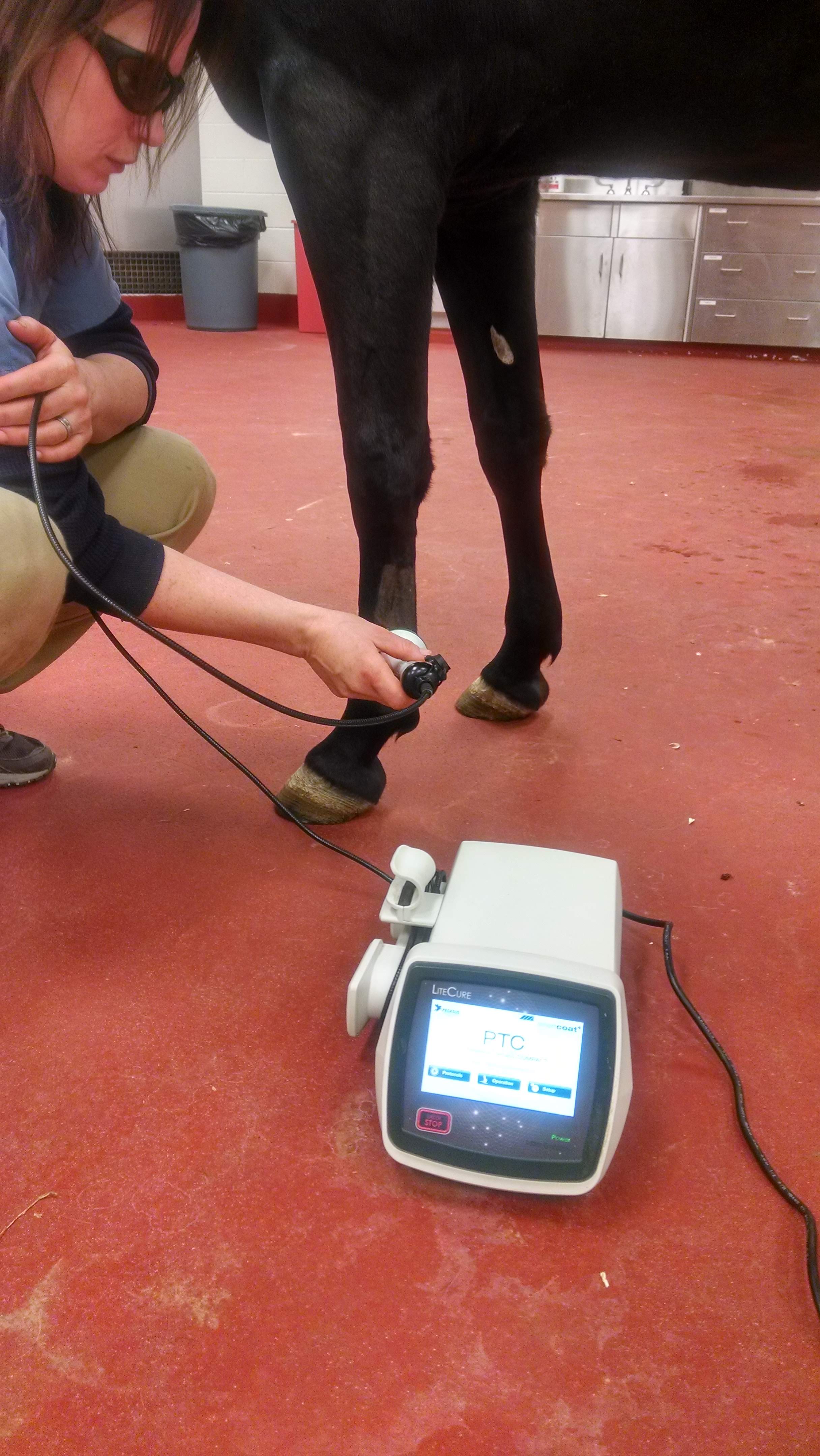Laser Therapy in Horse Treatment: A Modern Approach to Improving Horse Health And Wellness
Laser treatment has emerged as an essential strategy in equine treatment, using focused light energy to cultivate mobile repair work and quicken recuperation from a range of ailments. By promoting mitochondrial task and improving ATP manufacturing, laser treatment not only boosts blood circulation yet also gives significant pain relief.
Comprehending Laser Treatment
Laser treatment, a non-invasive therapy method, has actually gained significant traction in equine medicine due to its efficacy in promoting healing and pain relief. This advanced therapeutic method utilizes focused light energy to pass through cells, fostering mobile repair work and regrowth. The underlying system includes the stimulation of cellular mitochondria, resulting in enhanced production of adenosine triphosphate (ATP), the energy currency of cells. Boosted ATP degrees expedite tissue repair work processes and lower swelling, making laser treatment especially efficient for treating musculoskeletal injuries, injuries, and various other inflammatory conditions in horses.
There are numerous sorts of lasers made use of in equine therapy, each with particular wavelengths and power outcomes customized to various therapeutic demands. Low-level laser therapy (LLLT), additionally understood as cold laser treatment, employs reduced power levels to boost cell function without creating thermal damage. High-intensity laser treatment (HILT), in comparison, utilizes greater power levels to accomplish deeper cells penetration and even more significant healing effects.
Veterinarians make use of various laser gadgets and techniques depending upon the problem being treated and the wanted depth of tissue infiltration. Proper training and proficiency are critical for making sure the safe and efficient application of laser treatment, thereby maximizing its healing potential while lessening threats.
Benefits for Horse Health
With a solid understanding of exactly how laser therapy functions, it is essential to discover its countless benefits for equine health. One of the primary advantages is its capacity to speed up tissue repair and cell development. By boosting mobile feature, laser therapy promotes faster wound healing and help in the regeneration of damaged cells. This can be specifically advantageous in decreasing healing times for steeds experiencing from injuries.
Furthermore, laser therapy has actually been revealed to enhance circulation, thereby boosting blood circulation to affected locations. Boosted flow makes sure that vital nutrients and oxygen are delivered extra successfully, assisting in the healing procedure. Furthermore, laser therapy's anti-inflammatory results assist in minimizing swelling and pain, which is crucial for the overall wellness of the steed.
Discomfort management is an additional substantial advantage. By releasing endorphins and blocking pain signals, laser treatment supplies efficient, non-invasive alleviation from both intense and chronic discomfort. This can contribute to boosted movement and top quality of life this contact form for the pet.
Lastly, laser treatment is a non-invasive treatment choice, minimizing the risk of complications related to more intrusive procedures. Its adaptability and efficiency make it a very useful tool in modern-day equine vet medication.
Common Problems Treated
Another common problem treated with laser therapy is arthritis. In addition, laser therapy is employed in the administration of wounds.
Horse respiratory conditions, such as recurring airway obstruction (RAO), likewise respond positively to laser treatment. Laser therapy is valuable in dealing with unguis issues, including laminitis and abscesses.
Procedure and Safety And Security
Applying laser treatment in equine treatment entails a thorough procedure to make certain both effectiveness and safety. Equine Therapy. The process starts with an extensive vet assessment to determine the viability of laser therapy for the equine's details condition. When regarded suitable, the therapy area is prepared by cleansing and, get more if needed, clipping the hair to enhance laser infiltration
The professional needs to select the right sort of laser, normally a low-level laser (LLLT) or a high-power laser (HPL), relying on the condition being dealt with. The laser gadget is then adjusted to the suitable wavelength, power, and duration setups. Throughout the application, the expert moves the laser over the targeted location in a systematic way, ensuring regular and even exposure.
Safety and security protocols are purely complied with, consisting of making use of protective glasses for both the expert and the equine. Additionally, it is important to check the horse for any indicators of pain or unfavorable reactions throughout the procedure. Post-treatment, the horse is usually provided a period of remainder to enable the therapeutic impacts to show up.

Future of Equine Laser Treatment
As improvements in vet medication remain to unfold, the future of equine laser therapy holds considerable guarantee. Arising modern technologies and deeper scientific insights are set to refine and expand the applications of laser treatment for equines. Among one of the most expected advancements is the assimilation of advanced imaging techniques that permit more precise targeting of damaged tissues, thus improving healing outcomes. Furthermore, the growth of portable and straightforward laser devices is most likely to make this treatment extra available to a wider variety of experts and equine owners.
In addition, recurring research into the molecular and mobile devices of laser treatment will likely yield optimized methods tailored to details problems, enhancing effectiveness and lowering treatment times. Customized therapy plans based upon hereditary and biochemical markers might come true, making certain that each equine gets the most ideal and efficient care.
In addition, regulative developments and standardization of methods will enhance the reputation and dependability of laser treatment in equine practice. Equine Therapy. As these innovations remain to emerge, equine laser therapy is poised to come to be an essential part of veterinary care, offering enhanced healing and enhanced top quality of life for equines internationally
Final Thought
